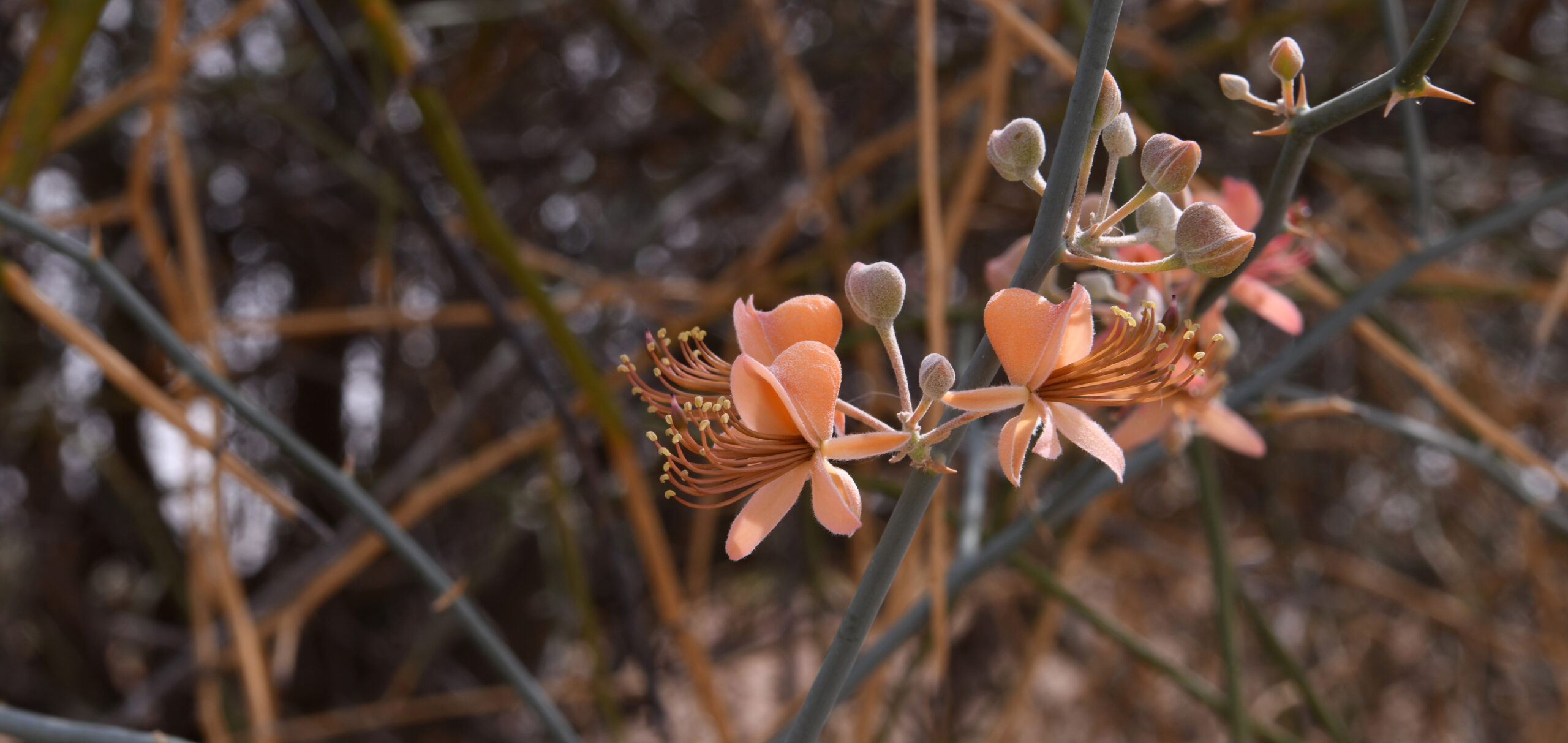Prosopis Cineraria is the state tree of Rajasthan with good reason. Commonly known as Khejri, Shami, or Jand, this multipurpose tree is well-adapted to a hot arid environment due to its drought-tolerant qualities. Not only does it assume a vital role in maintaining the ecosystem of the Thar Desert, it also sustains the nutrient value of the soil. Anointed the life-line of desert dwellers, the khejri is an important source of protein for both man and animal and prevents mineral deficiencies. Its parts can be variously consumed–ripe and unripe, as a vegetable or snack, ground into flour, boiled into beverages or as edible gum.

Khejri leaves and pods are a favourite with camels, cattle, and livestock, just as they are with wild herbivores like the black buck, chinkara, nilgai, and hare. This tall, evergreen and thorny tree also plays a considerable part in Rajasthan’s rural economy. The bark is used as wood, fuel, charcoal, and for tanning, while its many versatile parts are extensively used in traditional remedies for inflammation, diarrhoea, measles, and snake or scorpion bites.
Sangri Ki Phali

-
It is the cylindrical fruit (pod) of this magnificent, life-sustaining tree that is known to us as sangri or sangar. The multi-seed pod usually grows to 20 centimetres in length, and is plucked in the month of April when it is still in its green, unripe form. The prized harvest is then sun-dried and stored away for later use. Those pods that make it to full maturity while still on the tree are called khokha. Over time, they acquire a yellow-brown hue, and crunchy texture, making for a popular snack-on-the-go with children and adults alike. Needless to add, the most well-known use of sangri has been in the popular dish called ker sangri. Long synonymous with the cuisine of Rajasthan, this preparation–in its simplest form–is a savoury combination of boiled, rehydrated sangri and ker (kair), a caper like sour berry borne by the karir shrub (Cappari decidua). Dates and raisins along with other dried fruits are, however, known to find their way into this dish on festive occasions.
Nutrient-packed Panchkuta

-
While considerably lesser-known than ker sangri, this mixed vegetable dish is a nutrient-packed and much-consumed Marwari preparation. As indicated by its name, panchkuta is made with five primary ingredients, all of which, when dehydrated, store well and are suitable for dry desert conditions. These are ker, sangri, kumatiya (acacia pods), gunda (gum berry or lasura), and kachari (wild melon or chibar). All of these are collected, dried, and stored beforehand, although nowadays, more often than not, the tangy kachari is substituted with the easily available amchur, dried mango powder. Because it requires no refrigeration, panchkuta is also a preferred travel buddy on long journeys, and packs quite the energy punch when eaten with butter or desi ghee smeared bajra rotis. Should you be interested in trying your hand at cooking it, pre-mixed packs are available online, and cost upwards of Rs 2000/kg for quality ingredients.
Dhokli Delight

-
Although sangri is not an ingredient in this dish, its grown-up version, khokha, is used to generously line the steaming container in which dhokli is prepared. Also called bhaapiya in some parts, these bite-sized dumplings are made with bajra or wheat flour, and placed between layers of khokha for steaming. This process infuses the dhokli with an earthy flavour, one that is best relished with large helpings of ghee and sugar. As a savoury dish, dhokli pairs well with moong dal in the better known dish called dal dhokli, but minus the steaming process.
Invoking gods

-
Like elsewhere in India, seasonal transitions in Rajasthan are also marked by fasting and feasting, and Shitala Ashtami, observed a week after the festival of Holi, is no different. Also called Basoda, this daylong fast is undertaken with the purpose of imploring goddess Shitala–believed to be a Durga-incarnate–to ward off diseases, particularly chicken and smallpox, and to pray for well-being in general. Since lighting kitchen fires is customarily prohibited on Shitala Ashtami, meals are prepared on the previous day and eaten cold and stale. It is also customary to offer foods endowed with cooling properties to appease the goddess – bajra raab, bajra roti, curds, and ghee are de rigueur. It is no surprise either that the fibre-rich and hydrating sangri ki phalli takes centre-stage on this occasion. Ker sangri and panchkuta, along with dahi bada, and kheer, are integral to the post-fast feast.




